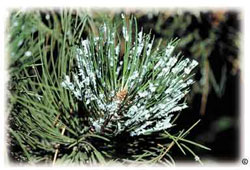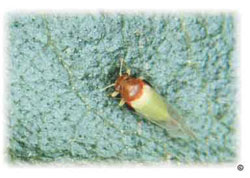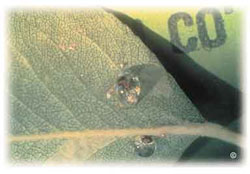What are psyllids?
Psyllids are small but devastating insects for gardeners growing tomatoes or potatoes. The insect causes tomato fruit to stop forming or ripening, and many small potato tubers to develop and sprout prematurely before harvest.
How do I know my plants have psyllids?

The mid-veins and edges of leaves on the tops of tomatoes turn yellow, or leaf veins may turn purple. Growth is checked and new leaves remain small, narrow and stand upright, producing a feathery appearance. Potato leaves become thickened and curled. Sugar -like crystals of waste from nymphs can be observed on the plants.
When are psyllids most common?

Psyllids are not year-round Colorado residents. They annually migrate from southern states on weather fronts, so infestations vary from year to year. The aphid-sized adults lay orange-yellow eggs on the backs of leaves.
What is the nymph stage?

The nymph stage that hatches is most often seen by observant gardeners turning over leaves to look for insect pests. Look for flat, green discs about one-quarter inch in size. The nymph does not move and this stage lasts for only two to three weeks. Four to seven generations are produced per year.
How can I prevent psyllids?
Spray at the first sign of infestation. Sulfur, lime sulfur esfenvalerate and permethrin are effective. Spray must thoroughly cover leaf undersides and be repeated weekly. Garden peppers and eggplants may be infested, although no damage is done to these crops.
For more information, see the following Colorado State University Extension fact sheet(s).
- Insect Control: Soaps and Detergents
- Beneficial Insects and Other Arthropods
- Insect Control: Horticultural Oils



